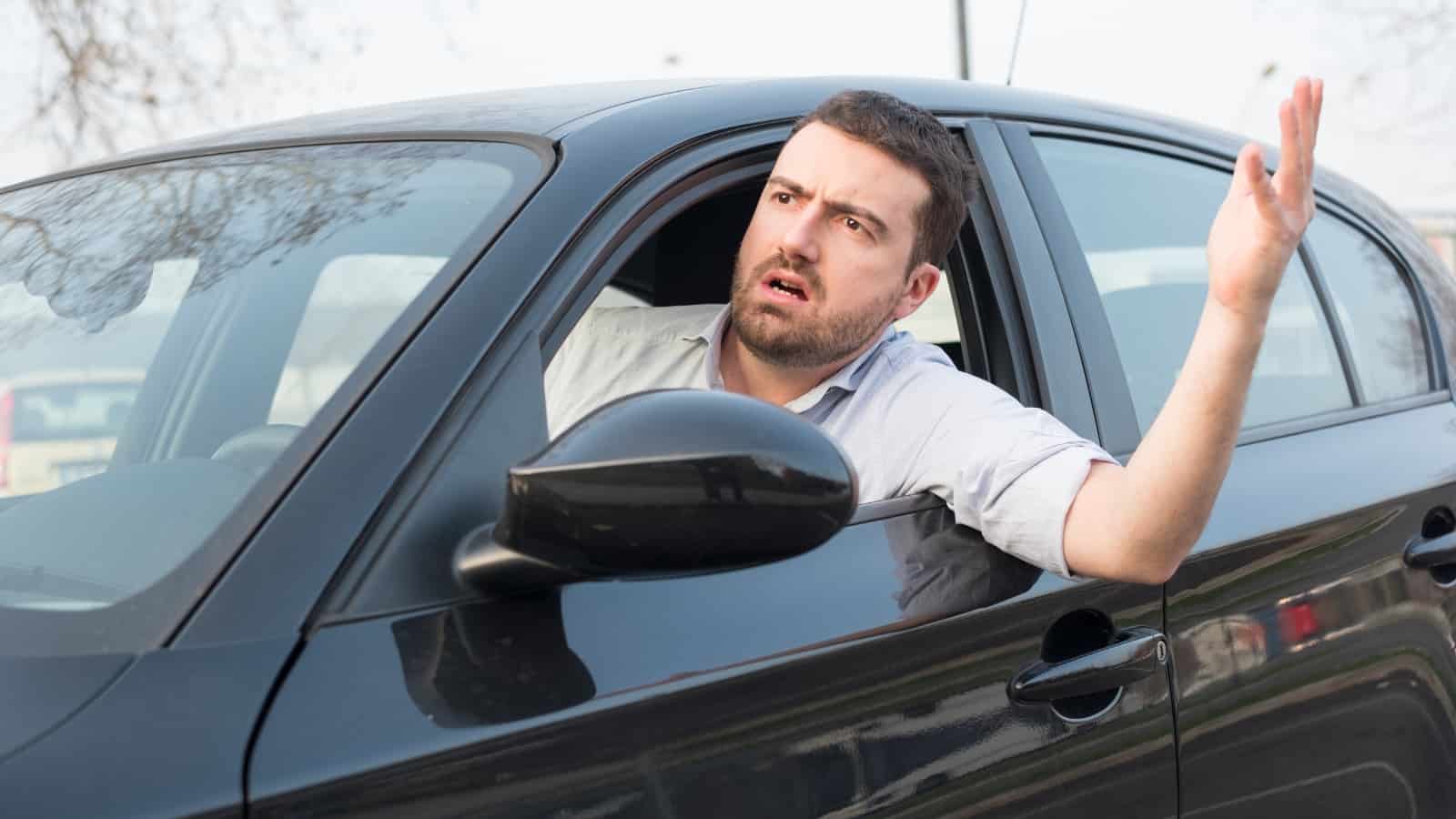Driving is a vital skill for most adults, requiring focus, respect for others on the road, and a solid understanding of safety rules. Unfortunately, not everyone follows these guidelines. Here’s a look at behaviors that signal you might not be prioritizing safe driving, or worse, that you don’t care.
Not Using Turn Signals

Turn signals are the language of the road, informing other motorists of your intentions and allowing them to respond accordingly. WTOV9 reports that signaling is essential for safe driving when changing lanes, turning at an intersection, merging onto the highway, or pulling out. Failing to use them isn’t just inconsiderate; it’s dangerous, causing confusion and traffic accidents.
Frequent Lane Changes

Even if you are using your turn signal, constantly weaving in and out of traffic creates an unnecessary safety risk and can disrupt or aggravate other drivers. Allow enough time for your journey, and be patient when driving. Constantly changing lanes and weaving in and out of traffic also makes you look selfish and inconsiderate.
Running Red Lights

You may be in a hurry, but that doesn’t mean you can disregard a red light, even if it only just changed. Disregarding these blatant safety signals puts you and other drivers at risk of a serious collision, like being t-boned at an intersection. Always come to a complete stop at red lights, and only go when the light turns green and you’ve checked that it’s safe to do so.
Speeding

I Drive Safely writes, “Driving above the speed limit is one of the biggest reasons car accidents happen.” Not only are you at greater risk of getting a ticket, but the reaction and stopping times are also reduced, increasing the likelihood of a severe collision. Even attentive drivers can be surprised by unexpected hazards, like a child running into the road or another car swerving across traffic.
Using a Mobile Phone

No matter how important that text message or email may be, looking at your phone screen while driving is very dangerous for you and others. Nothing is more important than safety, so keep your eyes on the road, your hands on the wheel, and your mind on the task. If there is an urgent need to check Google Maps or answer a call, pull over at a safe location first.
Tailgating

While slow or indecisive drivers can be frustrating for those behind, especially when late for a deadline, following the vehicle too closely isn’t a safe or productive reaction. Tailgating adds unnecessary pressure to the situation, potentially making them drive more slowly, and is dangerous, reducing braking distances far below the “three-second rule.”
Not Yielding the Right of Way

Yielding the right of way isn’t a mere courtesy; it’s an obligation that is essential for the safe, fair, and constant movement of traffic. Progressive says disrespecting ‘right of way’ is an overly aggressive driving trait, indicating selfishness and a disregard for safety. Always yield to vehicles and pedestrians that are given priority according to the Highway Code.
Ignoring Blind Spots

Every car has blind spots—areas that cannot be seen by the driver using the mirrors alone. A good driver checks over their shoulder (before changing lanes, turning, or parking) to ensure a preventable ‘side-swipe’ collision. This is especially important when sharing the road with vulnerable motorcyclists, cyclists, and pedestrians.
Not Waiting at Stop Signs

A stop sign is like a red light and demands a complete stop. Even if you have clear visibility, don’t roll through a stop sign at an intersection. Stopping fully only takes a few extra seconds, yet it allows a thorough and safe traffic assessment and ensures there are no pedestrians, cyclists, or other vehicles approaching. ‘Rolling stops’ are both dangerous and illegal.
Ignoring Road Conditions

The posted maximum speed limit is a guideline and assumes standard driving conditions. When driving in low visibility (snow, fog, heavy rain, or darkness) or on a road that is slippery with snow, ice, or rain, you must adjust your speed and driving style to accommodate the adverse conditions. This can also apply to heavy traffic or a poorly maintained road surface.
Reckless Acceleration

So-called ‘jackrabbit starts’ might seem cool and impressive, but they only make you look like a childishly poor driver. Accelerating away from a traffic light or stop sign is inconsiderate and dangerous, significantly increasing your risk of having a collision, especially a rear-ender. Maintain a safe distance and avoid startling fellow road users with a jerky, aggressive driving style.
Road Rage

Good drivers are calm and tolerant, even when other motorists are inexperienced or don’t respect the rules. Don’t react to frustration by being aggressive or engaging in behaviors like yelling, making obscene gestures, or intentionally inconveniencing others. Be mature and patient—either report dangerous driving to the authorities or “let it go” if it’s a minor infraction.
Parking Violations

Nothing screams selfishness like parking in a way that is hazardous or seriously inconveniences other road users or pedestrians. Always obey parking signs, respect ‘handicapped’ spaces, and avoid blocking crosswalks, driveways, or fire hydrants. Parking illegally can also result in a ticket and a tow, both good reasons to look for a more considerate place to park!
Sudden Braking

Like rapid acceleration, erratic braking is dangerous and increases on-road tension for everyone. Try to look ahead, anticipate traffic conditions, and prepare for stops well ahead of time to avoid slamming on the brakes. Doing so can startle drivers behind you and cause accidents. Instead, aim to give other motorists as much warning as possible.
Not Being in the Correct Lane

Staying in the correct lane ensures you don’t have to make sudden, unsafe lane changes or cross across traffic on a roundabout or intersection—which often results in collisions. Never use the right lane if you plan on turning left soon, and remember that the ‘passing lane’ is for passing only, so you should only use it for overtaking another vehicle.
Not Using Headlights

Whenever visibility is low, headlights help light the way and also highlight your presence to other road users. They are essential for all low-light and nighttime driving, as well as when driving in heavy snow, rain, or fog. If you’re unsure as to whether headlights are required, turn them on anyway—it’s better to be safe than sorry.
Not Maintaining Your Vehicle

Regular car maintenance is essential for safe driving and protects you, your passengers, and everyone on the road. American & Import Auto Repair states that ignoring routine maintenance can lead to unexpected breakdowns in dangerous spots, overheating, or a failure of turn signals or headlights. Make sure you monitor things like tire pressure/tread and fluid/oil levels.
Driving Under the Influence

Driving under the influence of alcohol or drugs is never acceptable, no matter how ‘sober’ you feel. Even a small amount can impair your judgment and coordination and lengthen your reaction times, significantly increasing the chance that you will cause an accident. If you’re going to be drinking or under the influence, plan for a designated driver or call a taxi.
Disobeying School Bus Stop Signs

When a school bus has its red lights flashing, and the stop sign extended, all traffic in both directions must come to a complete stop. There are no exceptions or excuses. This law protects children entering or exiting the bus. Disregarding a school bus stop sign is not only illegal, it’s hazardous, so be mindful whenever you see a yellow bus.
Disregarding Common Courtesy

While not a legal requirement, being ‘nice’ to other motorists makes driving safer and more enjoyable for everyone. Allowing merging vehicles to enter your lane, using your horn only as a warning, and being patient with slower or less experienced drivers increases safety and reduces tensions. Remember that the road is a shared space, not your own personal freeway!







